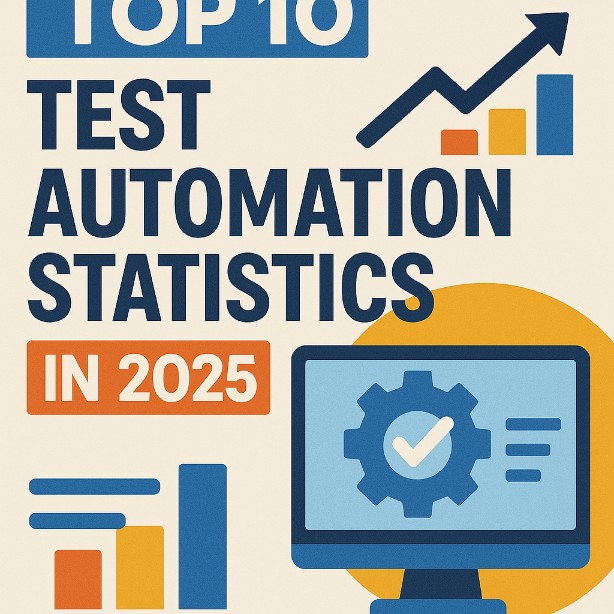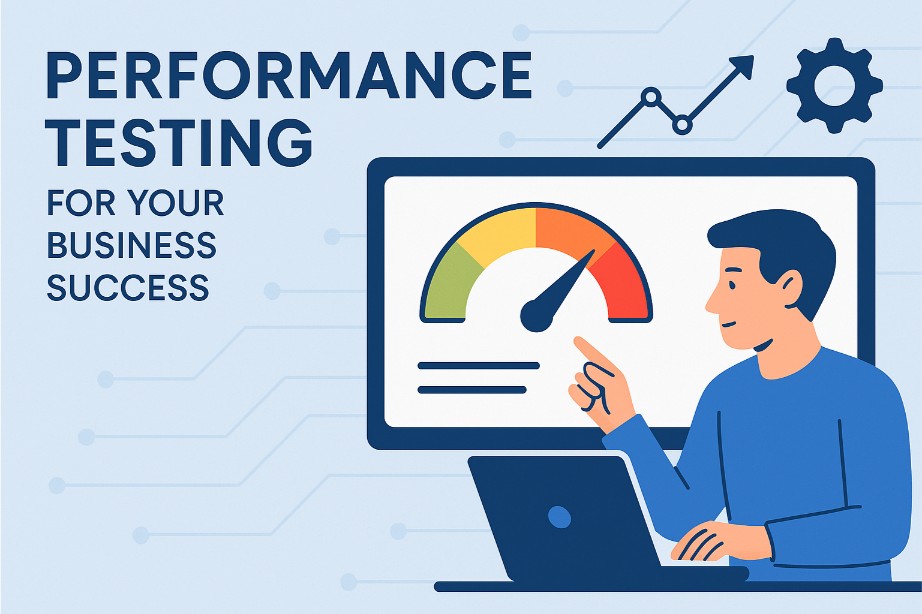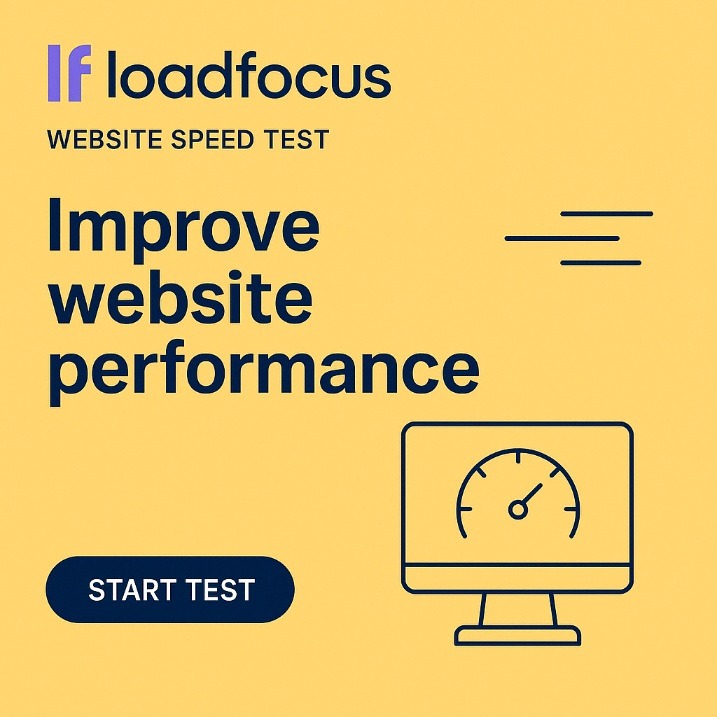In today’s fast-paced business world, data is like oxygen—if you’re not using it effectively, you’re falling behind. Cloud analytics tools help businesses gather, process, and analyze data to make better decisions, faster. Whether you’re a small business owner, a product manager, or a software engineer, understanding which tools best fit your needs is critical to staying ahead.
This guide will walk you through 12 of the best cloud analytics tools that can help transform how you handle data and give your business a competitive edge. Let’s dive in!
Is Your Infrastructure Ready for Global Traffic Spikes?
Unexpected load surges can disrupt your services. With LoadFocus’s cutting-edge Load Testing solutions, simulate real-world traffic from multiple global locations in a single test. Our advanced engine dynamically upscales and downscales virtual users in real time, delivering comprehensive reports that empower you to identify and resolve performance bottlenecks before they affect your users.
Why Cloud Analytics Tools Are a Must-Have for Staying Competitive in 2025
Cloud analytics isn’t just about crunching numbers; it’s about turning raw data into actionable insights in real time. Whether you’re managing a website, developing software, or making high-level business decisions, you need to know what’s happening now—not a week ago. That’s where cloud analytics tools win out over traditional analytics platforms, offering scalability, cost efficiency, and accessibility from anywhere.
In 2025, businesses will generate more data than ever before, and only those who can harness and interpret this data quickly will thrive. With the right tools, you can turn mountains of data into real-time reports, forecast future trends, and even automate decision-making. The right tool can save you time, money, and—most importantly—give you a competitive edge.
Key Features to Look for in Cloud Analytics Tools
Before jumping into the list, let’s break down some of the critical features to look for when choosing a cloud analytics tool:
Think your website can handle a traffic spike?
Fair enough, but why leave it to chance? Uncover your website’s true limits with LoadFocus’s cloud-based Load Testing for Web Apps, Websites, and APIs. Avoid the risk of costly downtimes and missed opportunities—find out before your users do!
1. Scalability
Ensure the tool you choose can scale to handle increasing amounts of data and users without sacrificing performance.
2. Real-Time Data Processing
Real-time insights are crucial. The ability to view live data ensures you can react to changes and make decisions quickly.
3. Integration
Your analytics tool should easily integrate with your existing systems like CRM, ERP, or other cloud services to prevent data silos.
4. AI and Machine Learning
Look for tools with machine learning capabilities if you want to uncover hidden patterns in your data and predict future trends.
LoadFocus is an all-in-one Cloud Testing Platform for Websites and APIs for Load Testing, Apache JMeter Load Testing, Page Speed Monitoring and API Monitoring!
5. Ease of Use
A user-friendly interface ensures everyone, from technical to non-technical team members, can make the most of the tool.
The 12 Best Cloud Analytics Tools for 2025
1. LoadFocus
Overview
First up is LoadFocus, a comprehensive cloud-based performance testing and monitoring platform that ensures your website, applications, and APIs run smoothly. Beyond performance testing, LoadFocus plays a crucial role in cloud analytics by providing real-time insights into how your infrastructure handles load and traffic.
Key Features
- Real-Time Page Monitoring: LoadFocus constantly monitors your website’s performance and load capacity, offering insights that help you maintain peak performance.
- API Monitoring Tool: Continuous API Performance Monitoring in the Cloud from multiple cloud locations
- Free SSL Checker Tool: With the LoadFocus SSL Checker, you can easily verify your site’s security status.
- Stress Testing and Load Simulations: Preemptively identify potential issues before they impact user experience by running simulations of thousands of users interacting with your site.
Benefits
Using LoadFocus ensures that your site remains fast and responsive even under heavy traffic. This makes it essential for eCommerce businesses, SaaS platforms, and digital services with high user demands.
Use Cases
From small startups to large enterprises, LoadFocus caters to a wide range of industries. Whether you’re preparing for a product launch, running an online sale, or managing an API-heavy platform, LoadFocus keeps you prepared.
Pricing
LoadFocus offers a variety of pricing plans, making it accessible for businesses of all sizes. With competitive pricing and extensive features, it’s a valuable tool in any performance testing and cloud analytics strategy.
Conclusion
If you’re serious about optimizing your website’s performance in 2025, LoadFocus is a must-have tool. Try it today and see how it can enhance your site’s reliability.
2. Microsoft Azure Synapse Analytics
Overview
Microsoft Azure Synapse Analytics is a powerful analytics service that integrates big data and data warehousing. It enables businesses to process massive datasets, generate insights, and visualize data in real-time.
Key Features
- Unified Analytics Platform: Combines big data and data warehousing capabilities.
- Integration with Microsoft Ecosystem: Seamlessly integrates with Azure, Microsoft Power BI, and other Microsoft tools.
- Real-Time Analytics: Process and analyze large datasets in real time.
Benefits
Azure Synapse is perfect for large enterprises dealing with big data. Its ability to handle large volumes of data, combined with its machine learning and AI capabilities, make it a top choice for data-driven businesses.
Use Cases
Ideal for companies working with vast amounts of data, Azure Synapse is perfect for industries like finance, healthcare, and retail that need to process and analyze complex datasets efficiently.
Pricing
Microsoft offers flexible pricing for Synapse Analytics, ensuring that businesses of all sizes can access its powerful features.
Conclusion
Azure Synapse Analytics is a leader in the cloud analytics space for good reason. If you’re looking for an integrated solution to handle big data, it’s hard to beat.
3. AWS QuickSight
Overview
AWS QuickSight is Amazon’s cloud-based business intelligence service that allows you to create interactive dashboards and visualize data in a way that aids decision-making.
Key Features
- Interactive Dashboards: Create dynamic, interactive dashboards with minimal setup.
- AI-Driven Insights: Leverage Amazon’s machine learning models for advanced data predictions and analysis.
- Seamless AWS Integration: Perfect for businesses already using AWS services like Redshift and S3.
Benefits
AWS QuickSight provides a comprehensive, scalable solution for businesses already invested in the AWS ecosystem. Its ability to handle data at scale makes it suitable for both small teams and large enterprises.
Use Cases
QuickSight is an excellent choice for startups and enterprises that want to leverage Amazon’s cloud infrastructure for advanced analytics.
Pricing
AWS QuickSight offers pay-per-session pricing, making it cost-effective for businesses that need flexible, scalable analytics.
Conclusion
For businesses already using AWS, QuickSight is a natural extension that adds powerful analytics capabilities to their toolkit.
4. Google Cloud Looker
Overview
Google Cloud Looker provides a business intelligence platform that makes complex datasets more accessible. It stands out by offering intuitive interfaces that allow for easy data exploration and visualization.
Key Features
- Integration with Google Cloud: Works seamlessly with other Google Cloud services for a unified data experience.
- Customizable Dashboards: Create user-friendly, customizable dashboards that make it easy to uncover insights.
- Data Exploration: Simplifies access to data, making it easier for both technical and non-technical users to make data-driven decisions.
Benefits
Looker is designed to integrate seamlessly into businesses that rely heavily on Google Cloud. Its ability to offer deep insights without overwhelming users makes it a great choice for teams of any size.
Use Cases
Ideal for organizations already using Google Cloud, Looker provides a powerful and intuitive analytics platform that can handle complex data sets.
Pricing
Google Cloud Looker offers flexible pricing options, allowing businesses to scale based on their needs.
Conclusion
For teams that rely on Google Cloud, Looker offers an intuitive and powerful way to analyze data. Its deep integration and ease of use make it a top pick in 2025.
5. Tableau Online
Overview
Tableau Online is a cloud-based version of the popular Tableau analytics platform, known for its strong data visualization capabilities.
Key Features
- Drag-and-Drop Interface: Build complex, interactive dashboards with a simple drag-and-drop interface.
- Cloud-Based Access: Access your data and dashboards from anywhere.
- Collaboration Tools: Share dashboards and insights with your team for collaborative decision-making.
Benefits
Tableau is one of the best-known names in data visualization, and Tableau Online brings that same power to the cloud. Its user-friendly interface makes it accessible to teams of all sizes and skill levels.
Use Cases
Perfect for non-technical users, Tableau Online makes it easy to create stunning, interactive data visualizations that provide real insights.
Pricing
Tableau Online offers a subscription-based pricing model, which is flexible for businesses of all sizes.
Conclusion
For businesses looking for strong data visualization tools that are easy to use, Tableau Online is a perfect choice.
6. IBM Cognos Analytics
Overview
IBM Cognos Analytics is an AI-driven business intelligence platform that helps organizations manage their data more efficiently. By utilizing machine learning, Cognos automates the data analysis process, making it easier for companies to generate predictive insights with minimal manual effort.
Key Features
- AI-Powered Insights: Cognos uses artificial intelligence to analyze data and provide predictive insights.
- Custom Dashboards and Reports: Users can create highly customized dashboards and reports tailored to their specific needs.
- Seamless Data Integration: Integrates with various data sources to unify your data landscape.
Benefits
IBM Cognos Analytics is essential for businesses that want to stay ahead of the curve by using AI to forecast trends, improve decision-making, and optimize operations. It helps companies unlock hidden patterns in data that would otherwise go unnoticed.
Use Cases
Cognos is particularly suited for large organizations and industries like finance, healthcare, and retail, where predictive insights are crucial for staying competitive. It’s also ideal for teams that need advanced business intelligence without relying on manual data crunching.
Pricing
IBM offers a range of pricing plans based on the size of your organization and the specific features you need. Custom pricing is available for larger enterprises.
Conclusion
If you’re a large organization looking for a comprehensive, AI-driven analytics solution, IBM Cognos is a fantastic option. Its ability to automate insights with machine learning makes it indispensable for staying competitive in 2025.
7. Sisense
Overview
Sisense combines business intelligence (BI) with embedded analytics, enabling developers to embed advanced analytics directly into applications and workflows. It’s highly customizable, making it a favorite for developers looking to tailor analytics solutions to their specific needs.
Key Features
- Embedded Analytics: Embed analytics into your products and applications to deliver data-driven insights directly to your users.
- Customizable Dashboards: Create fully customizable dashboards that suit your business and technical requirements.
- Scalability: Sisense can handle large datasets and complex data pipelines, making it ideal for growing businesses.
Benefits
Sisense allows businesses to deliver powerful analytics directly where they’re needed most. By embedding analytics into your existing applications, you can provide valuable insights to users without requiring them to switch tools.
Use Cases
Ideal for product owners and developers, Sisense enables you to add advanced analytics functionality to your existing applications, allowing your end users to make data-driven decisions.
Pricing
Sisense offers a range of pricing plans based on the scope of your business. Custom pricing is available depending on your data requirements and user base.
Conclusion
For businesses looking to embed analytics into their products, Sisense offers the perfect blend of power and flexibility. It’s a great tool for product teams and developers who want to integrate data insights directly into their applications.
8. Domo
Overview
Domo is a cloud-based analytics and collaboration platform that excels in real-time data analysis. Its primary strength lies in enabling teams to collaborate on data insights in real time, making it ideal for remote teams or fast-paced environments.
Key Features
- Real-Time Data Processing: Analyze data as it comes in, providing up-to-the-minute insights.
- Collaboration Tools: Built-in collaboration features allow teams to work together on data analysis.
- Data Integration: Easily pull in data from multiple sources, including cloud platforms, spreadsheets, and databases.
Benefits
Domo’s emphasis on accessibility and collaboration makes it perfect for teams that need to act on insights quickly. Whether you’re managing a global workforce or running a fast-growing startup, Domo keeps everyone on the same page with real-time data.
Use Cases
Domo is particularly useful for businesses with distributed teams or those that need to make fast decisions based on real-time data. Its collaboration features make it easy for teams to work together, no matter where they are located.
Pricing
Domo offers tiered pricing based on your business needs, including options for small teams and larger enterprises.
Conclusion
If you need a cloud analytics platform that emphasizes real-time collaboration and data accessibility, Domo is an excellent choice. It’s ideal for businesses that rely on quick decision-making and remote teamwork.
9. Snowflake
Overview
Snowflake is a cloud-native data warehouse known for its flexibility and scalability. Unlike other cloud analytics tools, Snowflake operates across multiple cloud platforms, including AWS, Google Cloud, and Microsoft Azure, giving businesses the freedom to choose the best environment for their needs.
Key Features
- Multi-Cloud Flexibility: Run Snowflake on AWS, Google Cloud, or Azure.
- Scalability: Handle large datasets with ease and scale your data infrastructure as your business grows.
- Data Sharing: Securely share data across your organization or with external partners.
Benefits
Snowflake’s unique multi-cloud approach allows businesses to avoid vendor lock-in while still taking advantage of powerful cloud-based data analytics. Its scalability makes it a great choice for companies with large or growing datasets.
Use Cases
Snowflake is ideal for data-driven businesses that need flexibility in their cloud platform. It’s especially useful for companies in sectors like eCommerce, financial services, and SaaS that need to manage vast amounts of customer data, sales metrics, or financial reports.
Pricing
Snowflake operates on a consumption-based pricing model, allowing businesses to pay for the storage and compute resources they use. This makes it highly flexible for businesses of all sizes.
Conclusion
For businesses that require flexibility, scalability, and multi-cloud capabilities, Snowflake is a leading choice. Its ability to handle large datasets while allowing cross-cloud operations makes it indispensable for data-heavy organizations.
10. Databricks
Overview
Databricks is a unified analytics platform that combines data engineering, machine learning, and business intelligence. Built on top of Apache Spark, Databricks is designed to run complex analytics on large datasets, making it ideal for organizations looking to leverage big data and AI.
Key Features
- Machine Learning Integration: Databricks integrates seamlessly with machine learning models to provide advanced insights.
- Big Data Processing: Built on Apache Spark, it excels at processing massive datasets.
- Collaborative Workspaces: Teams can collaborate in shared workspaces, making it easy to manage projects involving multiple stakeholders.
Benefits
Databricks enables businesses to run advanced analytics and machine learning models on big data. By streamlining data workflows, it allows companies to extract value from their data faster and more efficiently.
Use Cases
Databricks is perfect for data scientists, engineers, and businesses that rely on AI and machine learning. Its ability to handle big data makes it ideal for industries like finance, healthcare, and technology.
Pricing
Databricks offers flexible pricing options based on your compute and storage needs, ensuring that it scales with your business.
Conclusion
If your organization relies on big data and machine learning, Databricks is an excellent platform to streamline your workflows and generate deeper insights.
11. Qlik Sense
Overview
Qlik Sense is a self-service data visualization tool that allows businesses to explore their data, create custom dashboards, and generate insights without needing extensive technical expertise.
Key Features
- Drag-and-Drop Interface: Build custom dashboards with a simple drag-and-drop interface.
- Self-Service Analytics: Empower non-technical users to analyze data and discover insights.
- Data Exploration: Users can explore data interactively, drilling down into details as needed.
Benefits
Qlik Sense enables non-technical users to engage with data in a meaningful way. Its self-service capabilities make it accessible to a wide range of users, from data scientists to business analysts.
Use Cases
Qlik Sense is a great fit for organizations that want to empower their teams to make data-driven decisions without relying on a centralized IT team. It’s ideal for marketing, sales, and operations teams.
Pricing
Qlik Sense offers both a free trial and a range of pricing options based on your business needs, making it a flexible choice for organizations of all sizes.
Conclusion
For businesses that need a self-service analytics tool, Qlik Sense provides powerful, intuitive features that make data exploration accessible to everyone on your team.
12. Looker Studio (Formerly Google Data Studio)
Overview
Looker Studio (formerly Google Data Studio) is Google’s free data visualization and reporting tool. It provides an easy-to-use interface for creating customized reports and dashboards, perfect for small businesses or teams on a budget.
Key Features
- Free to Use: Looker Studio is entirely free, making it accessible for businesses of all sizes.
- Google Integration: Seamlessly integrates with Google Analytics, Google Ads, and other Google Cloud services.
- Custom Reports and Dashboards: Users can easily create customized reports and dashboards to visualize their data.
Benefits
Looker Studio provides an affordable and easy-to-use platform for creating data visualizations. Its integration with other Google services makes it a natural choice for businesses already using Google’s ecosystem.
Use Cases
Looker Studio is ideal for small businesses, marketers, and students who need a simple way to turn raw data into actionable reports. It’s also a great tool for freelancers and agencies looking to create visual reports for clients.
Pricing
Looker Studio is completely free, making it an excellent option for businesses with limited budgets.
Conclusion
For businesses that need an affordable, user-friendly analytics tool, Looker Studio offers a perfect balance of simplicity and power. It’s a great choice for creating visual reports and dashboards without breaking the bank.
Final thoughts
Choosing the right cloud analytics tool for your business is crucial in 2025. Whether you’re looking for performance monitoring, big data analytics, or real-time insights, there’s a tool in this list that fits your needs. From LoadFocus to Google Cloud Looker, these platforms offer the features and scalability necessary to keep your business competitive in the digital age.
If you want to improve your website performance and load testing capabilities, LoadFocus offers a suite of tools to optimize your infrastructure. Try it today and start your journey to a faster, more efficient site!
FAQs
What are the 4 types of data analytics tools?
- Descriptive: Provides insights into what has happened (e.g., Tableau).
- Diagnostic: Explains why something happened (e.g., Sisense).
- Predictive: Forecasts what might happen (e.g., IBM Cognos).
- Prescriptive: Suggests actions based on predictions (e.g., Databricks).
What is cloud analytics?
Cloud analytics refers to using cloud computing platforms to process, store, and analyze data, allowing for real-time insights without requiring extensive infrastructure.
What is the best tool for analytics?
It depends on your business needs. For small to medium-sized businesses, Tableau Online is highly recommended for data visualization. Larger enterprises might benefit from Azure Synapse or Google Cloud Looker for handling large datasets.
What is the difference between cloud and data analytics?
Data analytics refers to the process of analyzing datasets to gain insights. Cloud analytics specifically involves performing these tasks using cloud-based tools and platforms, providing scalability and real-time access.


![9 Best IT Incident Management Software [2025] 9 Best IT Incident Management Software [2025]](https://loadfocus.com/blog/wp-content/uploads/sites/5/2024/08/it-management-tools.jpg)


